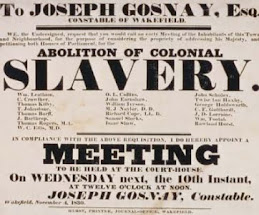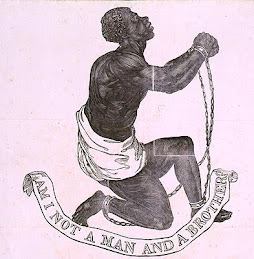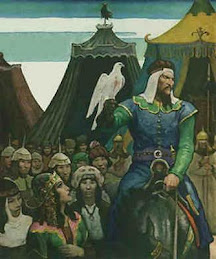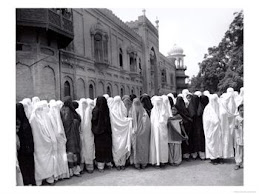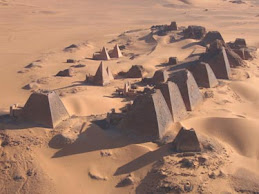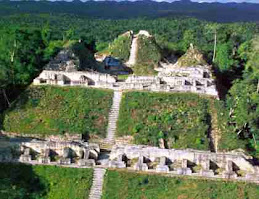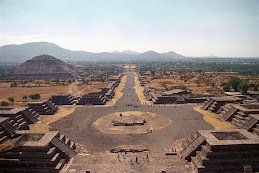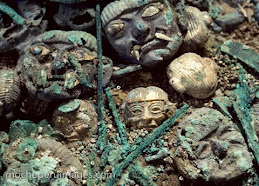TRADES
Silk Roads, Sea Roads, and Sand Roads in the post classical era contributed a great deal of change in the Afro-Eurasian world. Here's why:
---For one thing, long distance trade catered to the elite groups as most of the items were considered luxury products. So, possession of these prestigious goods signified a high level of social status.
--- Also, it helped religious ideas to spread voluntarily without the need to use any military enforcement, and more monasteries were built by Buddhist merchants as a place of rest for other traders.
--- Lastly, outbreaks of epidemic disease, like the spread of the Black Death, drastically wiped out about a third of the population of Europe.
Good or bad, change was bound to happen (though the effect of trade was different in the Western Hemisphere). In the Eastern Hemisphere, status in life, religion, and health was greatly impacted. It created wealth for some, but it caused death for many.
Just a very quick note on p. 229. It is mentioned that, "The capital city of Palembang was a cosmopolitan place, where even the parrots were said to speak 4 languages." Hmmm...so a human bilingual skill is no match to this multilingual parrot? : > )) I'm sure that they are referring to an "all-memorized" foreign language words, but that is still a talent! Or was it a hoax?
CINDERELLA'S SHOES
Ever wondered why Cinderella's story evolved around the search for the owner of that perfect small feet? Well, reading Chapter 9 made me assume that its idea was partly inspired by the foot binding practice. There's too many versions to the story, but a good example of this is, "Aschenputtel,"by the Grimm brothers. It is very graphic in details, and the 1st stepsister had to cut off her big toe while the 2nd stepsister cut off part of her heel just so they'll have the "perfect feet" and get a chance to better their lives. It did not work out for them in the story. However, it depicted a message that small feet is perfect feet. Clean, healthy, and pain-free feet versus stinky, broken, and painful feet...why sacrifice? For me, there should not even be an insane option. Shouldn't inner beauty and intellect be of higher value?
EXTORTION
I am very surprise with China's acceptance of extortion agreement (though China considers it as a Tribute System and not extortion). Based on its immense population and capability to produce war materials and tools, it would have been able to stage any war, but did not. Is it possible that the Buddhism religion had any influence on this issue? I am glad that diplomacy or skilled negotiation worked on this situation. China was taken advantage, but it was a better choice than to experience a blood bath. I just hope that its military strength would not be put to test again as it might entertain the opportunity this time...
Early Feminist Movement

www.media.photobucket.com
Nelson Mandela

inewscatcher.com
Monday, June 21, 2010
Thursday, June 10, 2010
World's Largest Pyramid Discovered, Lost Mayan City Of Mirador Guatemala...
This City of Mirador is often referred to as the "cradle of Mayan civilization." It is now facing threat from loggers and looters.
Monday, June 7, 2010
Chapter 7-Classical Era Variations (Africa and the Americas-500 B.C.E. -1200 C.E.)
I truly apologize for this late posting. I meant to do this much earlier, but too many overwhelming situations held me from doing so. I hope everyone will find the information from Chapter 7 helpful.
In classical era, about 80 percent of the world population was from Eurasia. Its writing was highly developed and civilization was very distinct. However, the Mesoamerican Maya, Peruvian Moche, and several civilizations in Africa (Meroe, Axum, and the Niger River valley) has also historical developments.
It's good to note that Africa is "bisected by the equator and was the most tropical of the world's 3 supercontinents (p.184)." It had poor soil and disease-carrying insects and parasites which caused serious health problems to its people. Geographically, its location helped make its history. Parts of Africa had the opportunity to interact with Eurasian civilizations.
The Kingdom of Meroe, a civilization in Africa, was ruled by mighty and sacred monarch. I personally find it shocking to know that their rulers were buried with human sacrificial victims (p. 186, top). It made me wonder how they decide on who should be the perfect sacrificial offering. Maybe, helpless children and virgins were on top of the list. What poor unfortunate souls!!! Anyway, its city had merchants, weavers, potters, slaves, etc. It amassed its wealth and power through the smelting of iron and the manufacture of iron tools and weapons. Its kingdom declined because of deforestation.
Axum, another civilization in Africa, was a highly productive agriculture and generated wheat, barley, millet, and teff. Its capital city had monumental building like obelisks. Through its connection to the Roman world and Red Sea trade, Axum was introduced to Christianity. The Axumite state slowly declined due to soil exhaustion, erosion, deforestation, and the rise of Islam.
Niger River in West Africa had a city-based civilization. The city of Jenne-jeno and the other cities operated "without the coercive authority of a state (p. 188)." Iron smithing was the earliest specialized occupation. Villages of cotton weaving, pottery, etc. followed. Their communities became occupational castes which means they could only marry within their own specialized jobs and skills. With its interaction with North Africa and the Mediterranian, Islam spread in the region and created a cultural change.
In Africa south of the equator, the slow movement of Bantu-speaking people brought "cultural and linguistic commonality (p. 190)." They had 400 distant but closely related languages. Some resolved issues and maintained peace by kinship stucture among other things. They also believed in ancestral and nature spirits, and even witches.
The Western Hemisphere was not exposed to African and Eurasian people because the Atlantic and Pacific Ocean secluded them from one another. A careful look at the civilization of Mesoamerica is quite striking. Mesoamerican Maya were very intelligent people. They developed a mathematical system to be able to predict eclipses and to even figure out the length of the solar system. Their temples, pyramids, and palaces had painted murals. I am very much impressed with the fact that they even constructed a water management system to support their agriculture. Very sadly, though, their population dropped by 85% or more due to famine, epidemic, and warfare. In the end, construction of giant cities were abandoned. We can now just imagine what else they could have built or discovered if those sudden deaths did not occur.
Teotihuacan, to the north in the valley of Mexico, was the largest urban complex in the Americas. Archaelogists have found the remains of about 200 people at the Temple of the Feathered Serpent. It is good to assume that those must be sacrificial victims because their hands and arms were tied behind them. My heart goes to those who were unjustly killed even if it was religiously mandated. I find no justification for that purpose. However, it is interesting to know that its great metropolis was dubbed as the "city of the gods" by the people of the Aztec Empire. Other than that, much is unknown about its language and government.
For me, it was horrifying to read that archaelogists have uncovered human trophy heads in the region of Peru. It was an indication of warfare and violence in the area. Chavin de Huantar, was a village with a strategic location in the Andean highlands. Major deities were represented as jaguars, crocodiles, and snakes in their religious beliefs. Chavin had no empires, but its religious cult was widespread.
Peruvian Moche was ruled by warrior-priests, and their ritual human sacrifice were the prisoners of war. I can't imagine the immense chaos and fear that must have covered the entire society due to wars and sacrificial rituals. Archaelogists have discovered burials of high-status individuals. Funeral objects made of gold were laid to rest with them. The region was subject to drought, earthquakes, and aggressive neighbors which caused its civilization to be just a part of history.
In classical era, about 80 percent of the world population was from Eurasia. Its writing was highly developed and civilization was very distinct. However, the Mesoamerican Maya, Peruvian Moche, and several civilizations in Africa (Meroe, Axum, and the Niger River valley) has also historical developments.
It's good to note that Africa is "bisected by the equator and was the most tropical of the world's 3 supercontinents (p.184)." It had poor soil and disease-carrying insects and parasites which caused serious health problems to its people. Geographically, its location helped make its history. Parts of Africa had the opportunity to interact with Eurasian civilizations.
The Kingdom of Meroe, a civilization in Africa, was ruled by mighty and sacred monarch. I personally find it shocking to know that their rulers were buried with human sacrificial victims (p. 186, top). It made me wonder how they decide on who should be the perfect sacrificial offering. Maybe, helpless children and virgins were on top of the list. What poor unfortunate souls!!! Anyway, its city had merchants, weavers, potters, slaves, etc. It amassed its wealth and power through the smelting of iron and the manufacture of iron tools and weapons. Its kingdom declined because of deforestation.
Axum, another civilization in Africa, was a highly productive agriculture and generated wheat, barley, millet, and teff. Its capital city had monumental building like obelisks. Through its connection to the Roman world and Red Sea trade, Axum was introduced to Christianity. The Axumite state slowly declined due to soil exhaustion, erosion, deforestation, and the rise of Islam.
Niger River in West Africa had a city-based civilization. The city of Jenne-jeno and the other cities operated "without the coercive authority of a state (p. 188)." Iron smithing was the earliest specialized occupation. Villages of cotton weaving, pottery, etc. followed. Their communities became occupational castes which means they could only marry within their own specialized jobs and skills. With its interaction with North Africa and the Mediterranian, Islam spread in the region and created a cultural change.
In Africa south of the equator, the slow movement of Bantu-speaking people brought "cultural and linguistic commonality (p. 190)." They had 400 distant but closely related languages. Some resolved issues and maintained peace by kinship stucture among other things. They also believed in ancestral and nature spirits, and even witches.
The Western Hemisphere was not exposed to African and Eurasian people because the Atlantic and Pacific Ocean secluded them from one another. A careful look at the civilization of Mesoamerica is quite striking. Mesoamerican Maya were very intelligent people. They developed a mathematical system to be able to predict eclipses and to even figure out the length of the solar system. Their temples, pyramids, and palaces had painted murals. I am very much impressed with the fact that they even constructed a water management system to support their agriculture. Very sadly, though, their population dropped by 85% or more due to famine, epidemic, and warfare. In the end, construction of giant cities were abandoned. We can now just imagine what else they could have built or discovered if those sudden deaths did not occur.
Teotihuacan, to the north in the valley of Mexico, was the largest urban complex in the Americas. Archaelogists have found the remains of about 200 people at the Temple of the Feathered Serpent. It is good to assume that those must be sacrificial victims because their hands and arms were tied behind them. My heart goes to those who were unjustly killed even if it was religiously mandated. I find no justification for that purpose. However, it is interesting to know that its great metropolis was dubbed as the "city of the gods" by the people of the Aztec Empire. Other than that, much is unknown about its language and government.
For me, it was horrifying to read that archaelogists have uncovered human trophy heads in the region of Peru. It was an indication of warfare and violence in the area. Chavin de Huantar, was a village with a strategic location in the Andean highlands. Major deities were represented as jaguars, crocodiles, and snakes in their religious beliefs. Chavin had no empires, but its religious cult was widespread.
Peruvian Moche was ruled by warrior-priests, and their ritual human sacrifice were the prisoners of war. I can't imagine the immense chaos and fear that must have covered the entire society due to wars and sacrificial rituals. Archaelogists have discovered burials of high-status individuals. Funeral objects made of gold were laid to rest with them. The region was subject to drought, earthquakes, and aggressive neighbors which caused its civilization to be just a part of history.
Subscribe to:
Posts (Atom)

